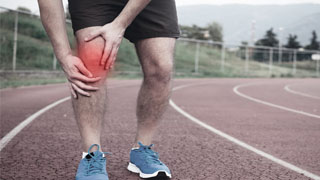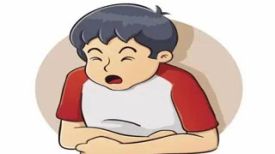
Meniscus tear refers to the tear of the medial and lateral meniscus located between the femur and tibia caused by knee joint trauma or degenerative wear, resulting in damage to the force distribution of the entire knee joint, which is more common in clinical practice.
The rupture of the crescent shaped fibrocartilage in the knee joint. Tearing is mainly caused by twisting force in half or full flexion of the knee, usually a football injury, and is also common in squatting workers such as coal miners. Tearing of the medial meniscus is more common than tearing of the lateral meniscus, which is related to the anatomical characteristics of the meniscus.
Knee meniscus tear
Meniscus tear is caused by traumatic events or chronic stress resulting from daily activities and physical activity.
However, we should be aware that even in healthy individuals, meniscus tears or degeneration can sometimes be observed.
Therefore, before undergoing arthroscopic surgery (i.e. meniscus repair or meniscectomy), exercise plans should be carefully tested to alleviate symptoms and restore joint function. Personal. If the exercise plan does not achieve the expected results, arthroscopic intervention and surgical correction of the problem should be performed. Anyway, an exercise plan is not a waste of energy, as it is an excellent preoperative preparation for knee joint surgery and will significantly improve the patient's postoperative recovery process.
It should be emphasized that in this situation, a complete assessment of the individual is also necessary to understand the mechanisms that exacerbate knee pain, as well as each person's special needs, hobbies, and expectations in life.
The exercise plan includes:
Strengthen knee muscles, especially quadriceps
Strengthen core muscles and gluteal muscles
Restore lower limb proprioception and balance
Retraining of motion control and recovery of biomechanical strategies during sports activities
Athlete's groin pain
Sports related inguinal pain often occurs in athletes, whose activities involve sudden acceleration, twisting and turning, cutting or kicking movements.
The onset of symptoms may be sudden or gradual, but both types can become chronic unless appropriate rehabilitation is achieved through targeted exercise programs.
When the onset is sudden, the mechanism is acute injury to the inguinal muscles (such as the adductor muscle), and treatment follows the classic treatment of muscle sprains. At first, there are 2-5 days of rest time for a few days until the acute inflammation subsides, and then a gradual exercise plan is started to strengthen the injured muscles and activate the core stable muscles.
As the pain gradually intensifies, in the early stages, it appears towards the end of exercise, is relieved through rest, and reappears the next morning. Mild activity and warm-up can alleviate symptoms. However, as the condition progresses, pain appears immediately after the start of exercise, lasts longer and becomes more intense, ultimately leading to athletes temporarily stopping their physical activity.
In this form of syndrome, it is necessary to carefully evaluate athletes and identify which muscle groups have problems in order to provide personalized exercise plans.
Rehabilitation plans typically include:
Activate pelvic floor stabilizer and retrain motion control
By practicing with equal length and then doing isometric exercises, gradually strengthen the adductor, gluteal muscles, angle sutures, and abdominal muscles.
The following is a combination of functional exercises that simulate sports activities, allowing athletes to enhance the strength and endurance of all muscles in the area.
Finally, evaluate the exercise pattern while running and retrain the athlete if necessary to run in a way that does not strain the area.


